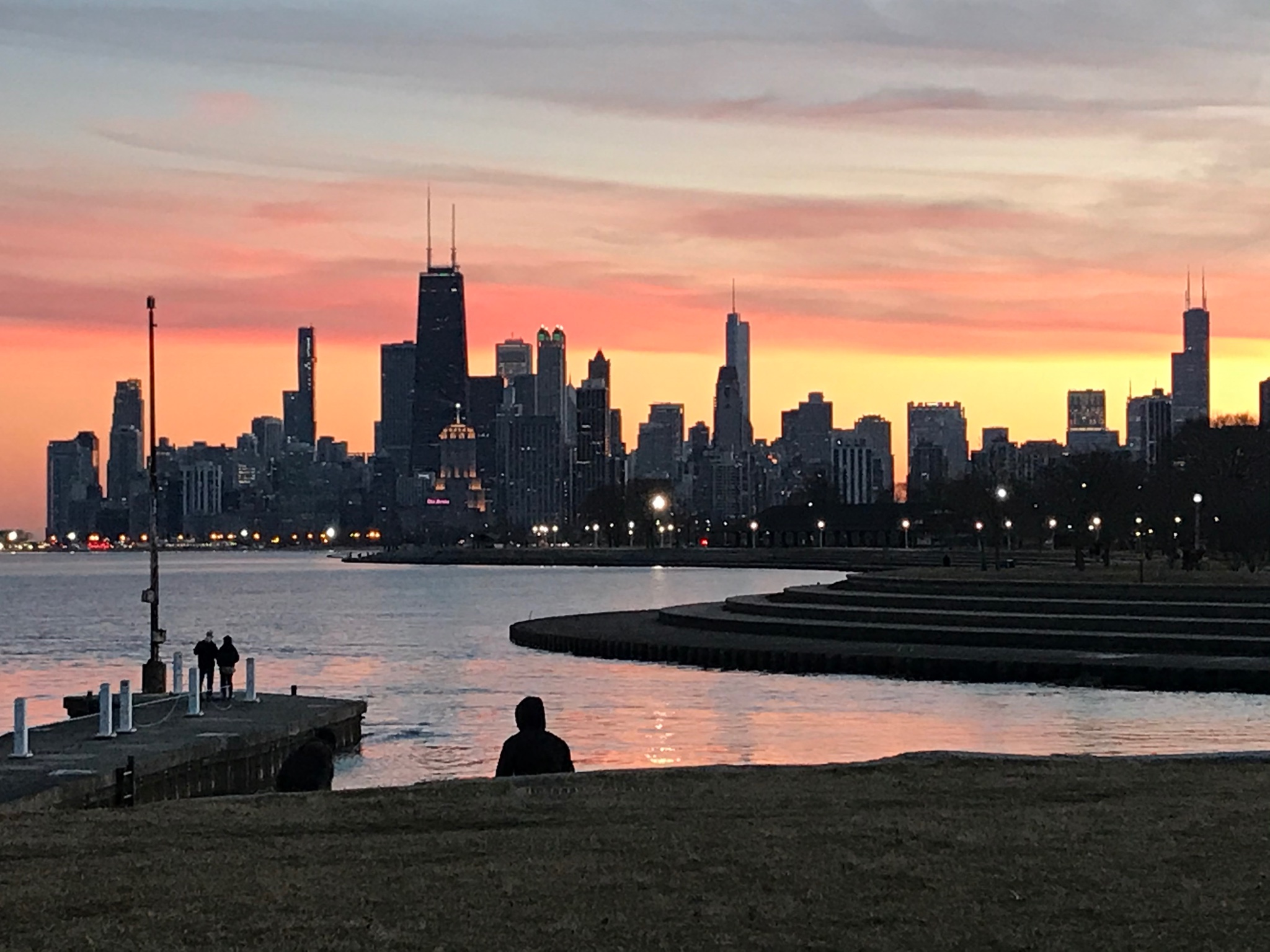
I've lived in Chicago for almost 7 years now. I honestly thought by the year 2020, which felt so far away whenI first moved to the city, we would have a bus-only lane on Michigan Avenue. I would ride the CTA's #4 Cottage Grove bus downtown from my home in Kenwood and become frustrated by it being slowed down by single-occupancy vehicles and taxis once we made it downtown.
After I moved up north to Edgewater, I experienced the same aggravation on the #147 Outer Drive Express. Sadly, there have been no serious discussions among city officials about having a bus lane on Michigan, a street that serves many bus routes. The city's new $20 million Bus Priority Zone program, which includes short stretches of bus lanes on high-ridership routes and other improvements is a step in the right direction for speeding up service, but what Chicago really needs is robust express bus routes with well-enforced bus lanes.
A few days after my recent Streetsblog article about how I expanded my "bike joy" was published, an astute commenter noted that hope alone won't get us the biking infrastructure that's needed so that people of all ages, abilities, and gender identities to feel safe biking. I was happy to read that because I totally agree that we need to take action to make the improvements we want to see happen. With that in mind, here are a bunch of ways you can make a difference in the sustainable transportation landscape in Chicago, in no particular order.
Improve your relationship with your alder
Unfortunately the Chicago Department of Transportation currently allows alders, people who are not experts in multi-modal transportation planning and design, to have a large say in what types of transportation infrastructure is built in their ward and where.
Until that system changes, it will be important for transportation advocates to build relationships with alders. Some City Council reps are more receptive to the concerns and experiences of people who ride public transportation and bike while others need more convincing that transit and cycling are legitimate forms of transportation that deserve more support. When concerns about car parking come up, for example when it comes to eliminating parking spaces to make room for bus and bike lanes, remind your alder that making transit and biking more convenient and appealing is a great way to reduce parking demand.
Use those transit feedback forms
Did you know that you can submit feedback to Chicagoland transit agencies? If there's a bus route that's frequently delayed by single-occupancy vehicles or poor signal timing, let the appropriate agency you'd love to see improvement. Perhaps this feedback can lead to prioritization of improvements for the impacted route. Know that you can use those feedback forms for praise too.
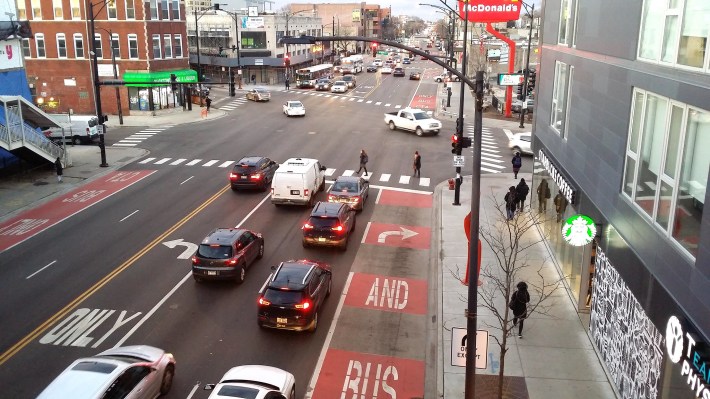
Contact your state representative and state senator
We need state reps and senators to understand why sustainable transportation deserves more funding. Are you aware that the Illinois General Assembly is the entity that will decide whether or not camera enforcement can be used to enforce Chicago bus lanes? Currently enforcement of the city's very few miles of bus-only lanes is left up to Chicago police. Camera-enforcement would be more effective and eliminates the possibility of racial-biased enforcement by police.
Push the Illinois Department of Transportation to prioritize walking, biking, and transit
I was inspired by reading that the Washington state transportation department has a director of active transportation, Barb Chamberlain. I've been told that IDOT has a few folks on staff who focus on walking and biking issues. Historically IDOT's road designs have prioritized facilitating driving, which is why IDOT-controlled roads in Chicago like North Avenue have generally not been planned with the safety and convenience of pedestrians, cyclists, and transit users in mind. We need a state mandate that compels IDOT to plan and design for a reduction in vehicle miles traveled and an increase in the number of people using transit, biking, and walking. As Chamberlain has said, a great goal for a state transportation department of transportation is a “complete, connected active transportation network statewide.”
Advocate for tax credits for E-bikes
Electrical-assist bikes can be useful for people with mobility challenges, such as seniors and people with disabilities, and they can be handy for longer trips, such as commutes to work and retail for people living on Chicago's South and West Side, where destinations tend to be farther apart than on the North Side. Providing a tax break would make e-bikes more affordable.
Create a more welcoming and intersectional biking community
Do your part to foster an environment where people of all income levels, ethnicities, ages, gender identities, etc. are empowered to enjoy the health, mobility, and economic benefits of cycling. Support these organizations that are helping to make Chicago's bike community more diverse.
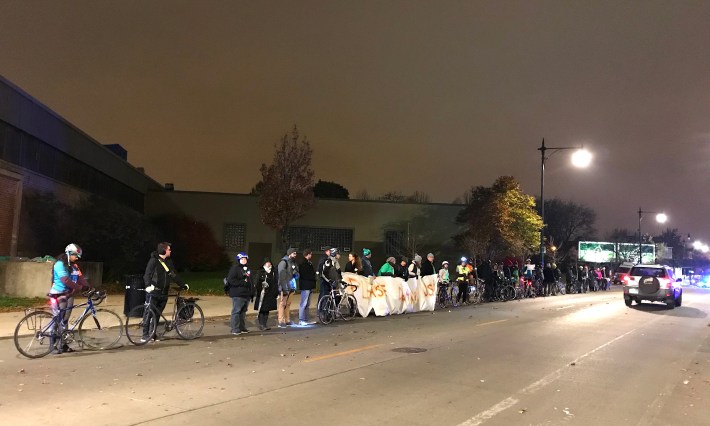
Organize a human-protected bike lane
Thanks to the magic of Twitter, I came across People Protected, a group of bike advocates who put their bodies on the line to bring attention to the need for protection for various bike lanes. People Protected started in San Francisco and has spread to Los Angeles, New York City, and Mexico City. After a turning truck driver killed school counselor Carla Aiello, 37, in the the Milwaukee Avenue bike lane in Old Irving Park last November, dozens of cyclists showed up to the crash scene to form a human-protected bike lane to call attention to the need for safer conditions for cyclists. We can do this on routes we use every day that are unsafe or uncomfortable due to unsafe drivers and/or a lack of physically protected bike lanes.
Continue to point to out that car parking shouldn't trump bus and bike lanes
The notion that all streets must provide storage for large privately owned metal boxes, often for free, is a major barrier to creating the bus and barrier-protected bike lanes that Chicago desperately needs. Granted, the issue is complicated by Chicago's awful 75-year parking contract, but pointing this out as often is possible will be necessary to make the case for the city dramatically curtailing free parking, and stripping paid parking where necessary. I would love to see the city eliminate free parking in areas that are well served by transit. Any parking spaces leftover once bus and bike lanes are installed should be priced according to parking demand (and maybe even by the value of the car in the future), and the revenue should be used to fund signal priority for buses and more frequent bus service.
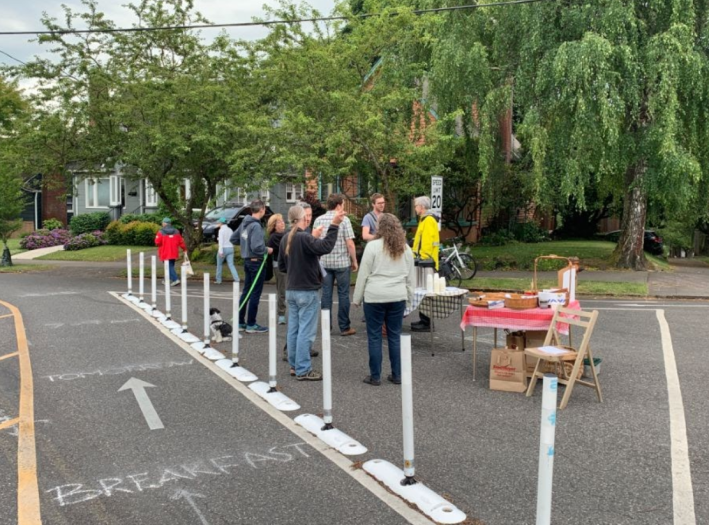
Connect more with your neighbors
The more people who walk, ride transit, and bike share their experiences with people who primarily drive, the easier it will be to change hearts and minds when it comes to prioritizing sustainable transportation. Safety issues like protected bike lanes shouldn't be left up to public opinion, given that most Chicagoans drive and feel entitled to free street parking. Until the city decides that safe and convenient walking, transit, and biking infrastructure is a basic component of a livable and sustainable city, we will need to change hearts and minds of the driving public.
I was inspired by a post on Bike Portland about a “Gathering on Greenways” event by a local group that promotes safe and liveable streets. Such events in Chicago could be a great way to connect with neighbors, share your vision for safer and more social streets, and build support for needed changes to our streets.
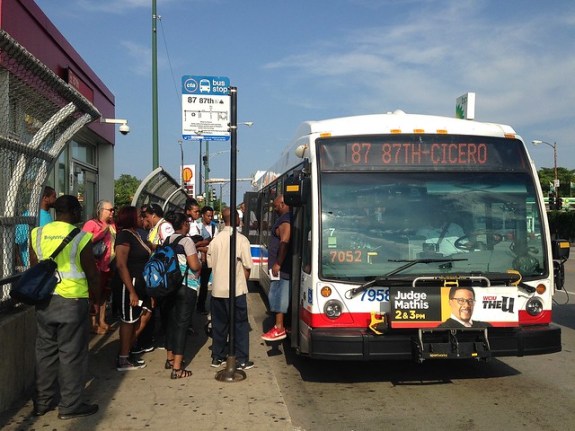
Familiarize your Alder with the Move Chicago Platform
When the Move Chicago Platform, a to-do list for Chicago's next mayor written by Streetsblog Chicago's Steven Vance and Lynda Lopez, plus the Transport Politic's Yonah Freemark, debuted last year I was so delighted by the vision contained within it. Here are a few points I really loved:
- Decriminalizing biking on the sidewalk
- Centering Vision Zero when it comes to street design
- Adding at least one “People Plaza” and pedestrian-only street in every community area
- Increasing the mileage of barrier-protected bike infrastructure
- Encouraging small businesses to buy electric and cargo bikes
- Instructing the Chicago Housing Authority to spend down at least $50 million per year of its unspent reserve funds on constructing or acquiring permanent affordable housing units within a half-mile of CTA rail station
- Increasing the amount of bus-only lanes
Advocate for bike Infrastructure Fit for All
When I asked folks who follow me on Twitter what they'd like to see on this list, one of the most frequent responses was bike lanes separated from drivers. Paint is not protection ,and if paint alone was enough to entice more people to bike, the streets would be filled with more people on bikes. All bike infrastructure should be safe and comfortable for anyone ages 8-80 to ride side by side without the fear of a driver accidentally or purposely encroaching on the space.
Push for these improvements to the regional transportation system
- Increase bus and train frequency within the city and region
- Fare integration between Metra, CTA, and Pace
- "Fair Fares" (reduced transit fares for low-income residents) across all Chicagoland transit agencies
- Implement a racial, gender, socioeconomic, accessibility, and environmental lense in all transportation planning
- Hire universal mobility coordinators on the state, regional, and city level to assist with efforts to make transit and even biking more accessible to folks with disabilities.
Recognize your gifts and find your place
If you're passionate about sustainable transportation, the movement to make our streets safer, more equitable, more efficient, and more enjoyable needs you! Figure out what you're good at and passionate about and find your place in the movement. It could involve making bike- or transit-oriented art, spreading the word on Instagram, filmmaking, or any other field of skill or expression.
Thanks for reading this list and let me know your thoughts in the comments section.
